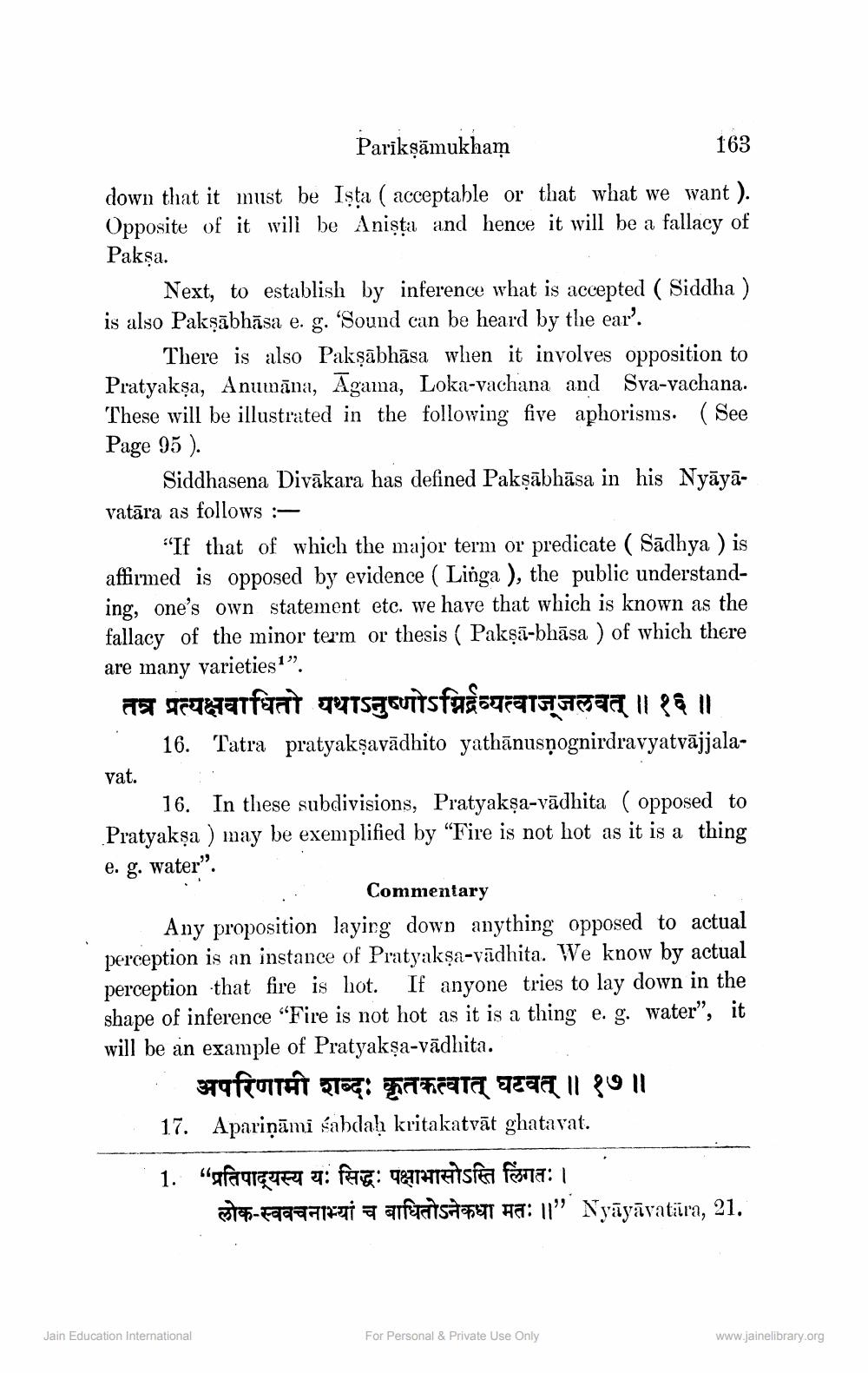________________
163
Parikşāmukham down that it must be İşta ( acceptable or that what we want ). Opposite of it will be Anista and hence it will be a fallacy of Pakşa.
Next, to establish by inference what is accepted ( Siddha ) is also Pakşābhāsa e. g. “Sound can be heard by the ear'.
There is also Pakşābhāsa when it involves opposition to Pratyakşa, Anumāna, Agama, Loka-vachana and Sva-vachana. These will be illustrated in the following five aphorisms. (See Page 95 ).
Siddhasena Divākara has defined Paksābhāsa in his Nyāyāvatāra as follows :
"If that of which the major term or predicate ( Sadhya ) is affirmed is opposed by evidence ( Linga ), the public understanding, one's own statement etc. we have that which is known as the fallacy of the minor term or thesis ( Pakşā-bhāsa ) of which there are many varieties?”. तत्र प्रत्यक्षवाधितो यथाऽनुष्णोऽग्निद्रव्यत्वाज्जलवत् ॥ १६ ॥
16. Tatra pratyakşavādhito yathānusņognirdravyatvājjalavat.
16. In these subdivisions, Pratyakşa-vādhita ( opposed to Pratyakşa ) may be exemplified by "Fire is not hot as it is a thing e. g. water".
Commentary Any proposition laying down anything opposed to actual perception is an instance of Pratyakşa-vādhita. We know by actual perception that fire is hot. If anyone tries to lay down in the shape of inference “Fire is not hot as it is a thing e. g. water”, it will be an example of Pratyaksa-vādhita.
- अपरिणामी शब्दः कृतकत्वात् घटवत् ॥ १७॥ 17. Apariņāmi śabdaḥ kritakatvāt ghatavat. 1. "fangeret a: The CT-retsig fra: 1
74-9997712Ti a aratat ha: 11" Nyāyāvatiira, 21.
Jain Education International
For Personal & Private Use Only
www.jainelibrary.org




